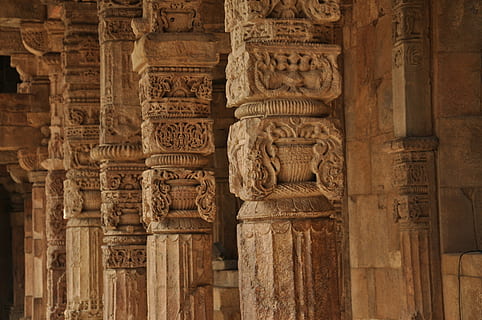The Hanging Pillar of Lepakshi Temple, an architectural marvel that has fascinated historians, architects, and travelers alike for centuries. In this article, we will delve deep into the intriguing history, intricate craftsmanship, and the captivating mysteries surrounding this enigmatic structure. Join us as we unravel the secrets of this extraordinary masterpiece!
Introduction: Unraveling the Enigma
The Hanging Pillar of Lepakshi Temple stands as a testament to the ingenious craftsmanship of ancient Indian artisans. Situated in the town of Lepakshi, Andhra Pradesh, India, this temple boasts of an astonishing architectural feat that continues to baffle modern engineers and visitors alike.
A Glimpse into History
The Lepakshi Temple, built during the Vijayanagara Empire in the 16th century, is a magnificent testimony to the rich cultural heritage and artistic prowess of ancient India.
The temple is dedicated to Lord Veerabhadra, a fierce incarnation of Lord Shiva. It was constructed by the brothers Virupanna Nayaka and Viranna, who were skilled architects and devout followers of Lord Shiva.
The Mysteriously Hanging Pillar
One of the most captivating features of the Lepakshi Temple is the suspended pillar, which has become an icon of wonder. The pillar, around 23 feet in height, is part of the intricately designed Navaranga Mandapam, a spacious hall that precedes the main sanctum. What makes this pillar extraordinary is its unique characteristic - it appears to be hanging mid-air, defying gravity and leaving visitors astounded.
Unveiling the Architectural Ingenuity
Upon closer examination, we find that the Hanging Pillar of Lepakshi Temple is not entirely detached from the ground. It is a clever demonstration of the balance between the center of mass and the pivot point. The pillar is delicately balanced on a small, spherical object, widely believed to be a small iron ball or a coconut. This remarkable engineering feat allows the pillar to remain aloft, defying conventional expectations.
Legends and Folklore
As with many architectural wonders, the Hanging Pillar of Lepakshi Temple is steeped in legends and folklore. One popular mythological tale suggests that the pillar was left unfinished by its architects, as completing it would bring calamity to the temple. According to the legend, during the temple's construction, an envious sculptor, eager to outshine the exquisite work, carved the Navaranga Mandapam ceiling with inverted designs. In response, the architects, Virupanna Nayaka and Viranna, sacrificed their eyes to the gods, turning the hanging pillar into an unfinished masterpiece.
Artistic Splendor: Carvings and Sculptures
Beyond the Hanging Pillar, the Lepakshi Temple is adorned with an awe-inspiring array of intricate carvings and sculptures. Each stone bears testimony to the artisans' exceptional skill and attention to detail. The temple walls depict various mythological scenes, celestial beings, and ornate motifs that narrate captivating stories from Hindu mythology.
The Magnificent Monolithic Nandi
A short distance away from the main temple, stands the colossal monolithic Nandi, Lord Shiva's celestial bull. Carved from a single block of granite, the Nandi sculpture is an astounding sight to behold. It measures approximately 15 feet in height and 27 feet in length, making it one of the largest monolithic Nandi sculptures in India.
Unlocking the Symbolism
As with most ancient Indian temples, every aspect of the Lepakshi Temple is infused with symbolism and spiritual significance. The Nandi represents strength, loyalty, and the vehicle of Lord Shiva, while the various deities and mythological scenes symbolize cosmic harmony and the eternal cycle of life.
Preservation Efforts and Tourism
In recent times, the Indian government and various heritage organizations have undertaken significant efforts to preserve and protect the Lepakshi Temple's architectural legacy. The temple's unique Hanging Pillar and intricate carvings have drawn tourists and history enthusiasts from across the globe, contributing to the region's cultural and economic growth.
Conclusion: An Enduring Architectural Wonder
In conclusion, the Hanging Pillar of Lepakshi Temple stands as an enduring enigma that continues to captivate the world with its architectural brilliance. As we marvel at the ancient craftsmanship and engineering prowess, we are reminded of the rich cultural heritage and artistic achievements of our ancestors.





Comments